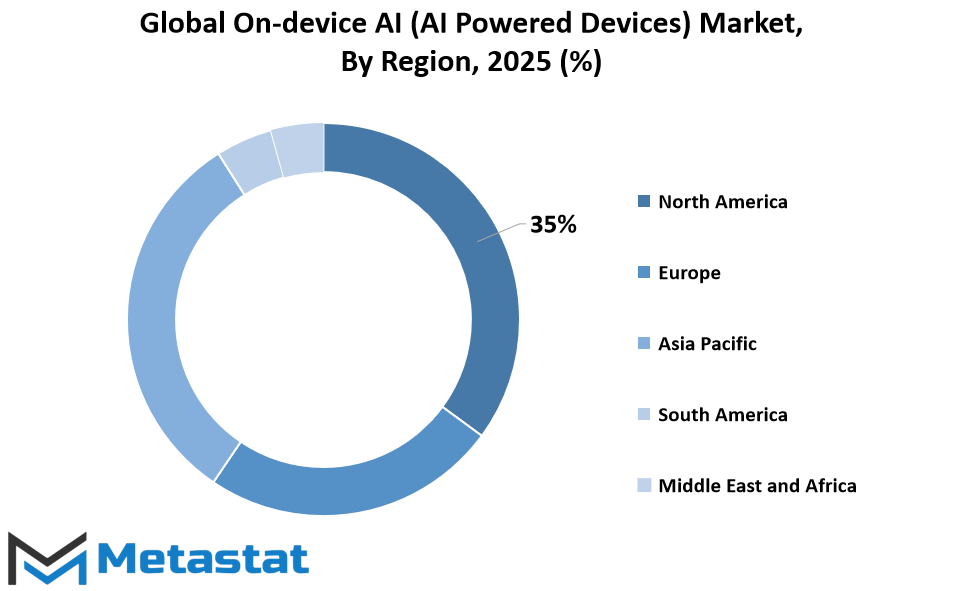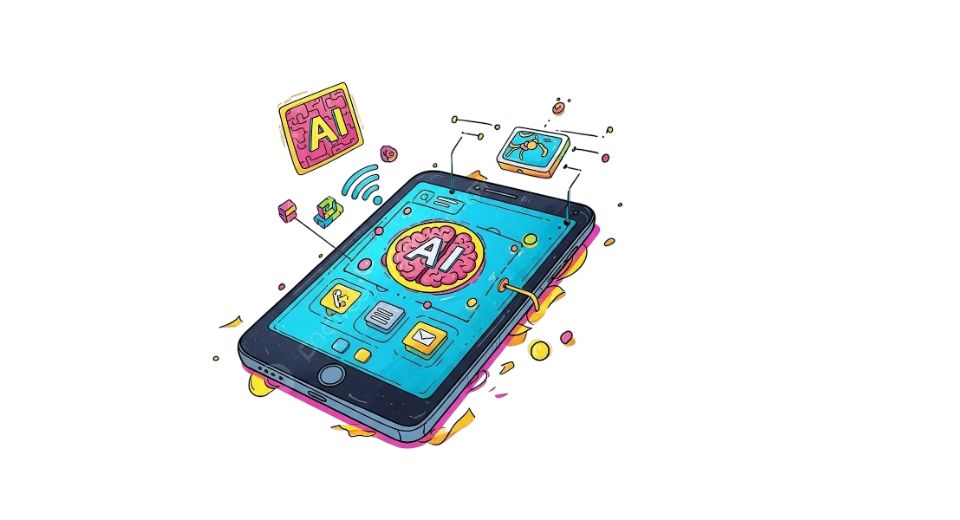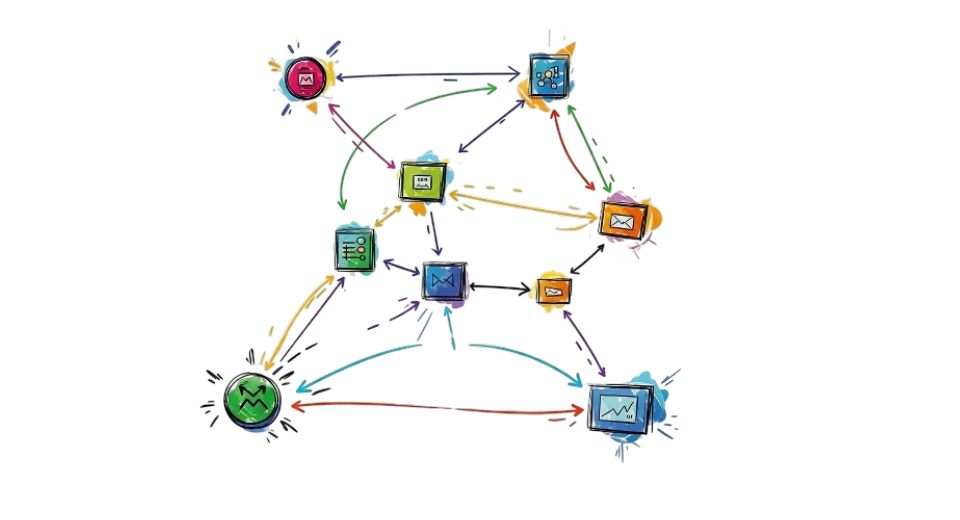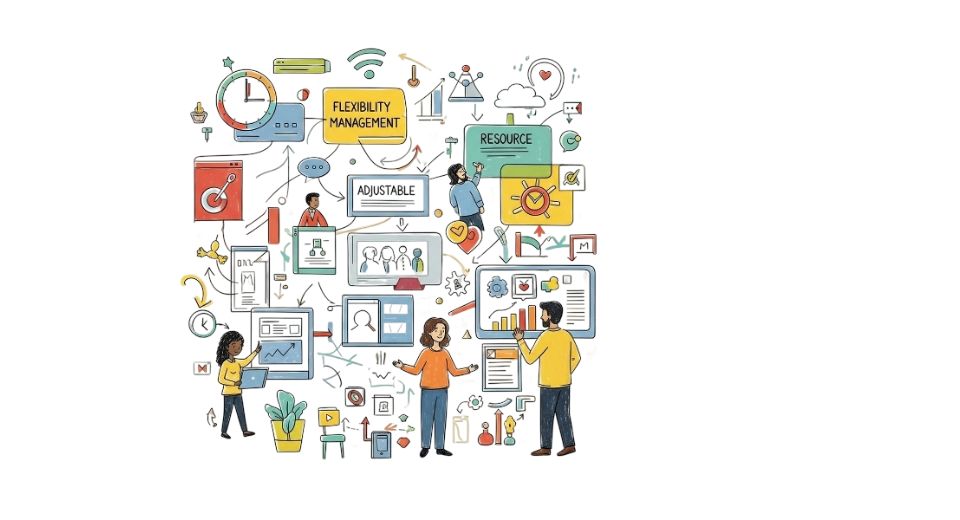MARKET OVERVIEW
The global on-device AI (AI powered devices) market is poised to shift from its existing paradigm, venturing into a realm where the convergence of hardware and intelligence will change the way humans relate to technology at a personal and intuitive level. This market, which has hitherto been sustained by improvements in mobile processors and intelligent applications, is bound to experience deeper convergences that will transcend convenience and performance. The future is a transformation of the way devices will behave not merely smarter, but more human in responsiveness and context awareness.
In the future, the global on-device AI (AI powered devices) market will encompass more than just smartphones, wearables, or home assistants. Rather, it will expand into areas such as healthcare diagnosis, industrial automation, personal transportation, and learning. Devices will be adaptive, able to process decisions locally without reference to cloud infrastructure. This will allow for greater security, real-time processing, and enhanced user privacy, making technology not only fast but also discreet and personal. The sector will progressively dissociate from reliance on centralized data centers, creating space for decentralized intelligence that is capable of acting swiftly and independently.
When companies start integrating AI accelerators into microchips themselves, the relationship between hardware and software will become even more synergistic. It will make devices learn continuously from the user, more predictive, proactive, and able to read minds even before the needs are articulated. These shifts will not only be driven by lifestyle convenience but will deliver meaningful changes in areas such as telemedicine, where diagnostic equipment will aid patients in distant locations, or agriculture, where autonomous equipment will self-adjust with the real-time conditions of the fields.
The global on-device AI (AI powered devices) market will also be influenced by geopolitics, security threats, and consumers' requirements for openness. With data privacy concerns deepening, individuals will opt for technology that stores personal information locally on the device instead of sending it to remote servers. This demand will lead manufacturers to favor edge AI solutions that are secure and functional in nature. In addition, the carbon footprint due to constantly running cloud servers will compel builders to create AI fashions that use lesser strength and may be efficaciously completed on-tool, subjecting innovation to sustainability.
At the equal time, this enterprise could be formed with the aid of converting regulatory environments, with governments in all likelihood to put in force standards for proper use of on-tool AI, particularly in sensitive areas like protection, education, and finance. The capacity to comply to those regulations without hampering innovation will decide which players stay relevant inside the long term. Device manufacturers will prioritize not only quicker chipsets but also better integration that complies with ethical and operational limits.
Finally, the global on-device AI (AI powered devices) market will evolve from technology-driven to people-driven. As machines start to read emotions, behavior patterns, and intention more accurately, the line between human instinct and machine prediction will become hazy, paving the way for a digital world that reacts not just to commands but to context itself.
Global on-device AI (AI powered devices) market is estimated to reach $28,712.46 Million by 2032; growing at a CAGR of 24.5% from 2025 to 2032.

GROWTH FACTORS
The global on-device AI (AI powered devices) market is also gaining a lot of pace as various industries look for devices with the capability to instantly process data without constant internet connectivity. This trend is being fueled by the rise in demand for real-time responses, enhanced privacy, and quicker performance. Users nowadays have the expectation of their devices to comprehend voice commands immediately, identify images on the spot, or make decisions without having to wait for cloud-based responses. These are not just hopes for smartphones and tablets; they are hopes for cars, home appliances, and wearable tech. The capability of AI-driven devices to act independently is no longer an extravagance it is fast becoming a norm.
As smart devices find their manner into extra consumer electronics and cars, the demand for on-tool smarts increases. From embedded non-public assistants in phones to sophisticated motive force-assistance technology in automobiles, these AI skills are being integrated into the era of everyday existence. Users are attracted to the rate and safety that neighborhood processing gives. In environments where the impact of a split second would make a difference in the experience or result navigation, health monitoring, or safety features this local decision-making isn't just a good idea, it's essential.
But this change isn't without issues. One of the main challenges is limited processing capacity and battery life on small devices. AI operations are usually resource-intensive and need heavy resources to run seamlessly. If those operations are carried out on small devices, it could bring about overheating or speedy battery depletion, which affects user pleasure. Another trouble is the price and complexity of incorporating AI into hardware. It takes time, money, and specialized understanding to construct powerful and green chips. Firms have to weigh overall performance against affordability in an effort to make those traits available to the loads.
In spite of these impediments, the future is vibrant. Advancements in facet AI chips and more shrewd, leaner machine learning fashions are making it less complicated to include excessive-degree intelligence into smaller gadgets. These innovations will cause new opportunities for the software of AI in industries. It may be a refrigerator that grasps utilization styles or a vehicle that anticipates danger before it occurs, however the functionality to do AI paintings immediately on the tool will spread across more packages.
Over the next few years, global on-device AI (AI powered devices) market will be supported by a combination of technological advancement and consumer need. With increasingly smart devices and smarter chips, this tactic with AI will not be something to consider it will be something that must be considered. The speed, convenience, and security of on-device intelligence are raising new expectations, and industries are already shifting to meet them.
MARKET SEGMENTATION
By Product Type
The global on-device AI (AI powered devices) market is witnessing a gradual transition in how devices are directly integrated with artificial intelligence instead of using cloud-based technology. This has made information processing faster, enabled better privateness, and provided quicker person response. Smartphones, clever domestic devices, and wearable technology are being designed with intrinsic AI talents, which makes them more autonomous in terms of records processing and decision-making. These traits will further dictate the manner that customers engage with their devices, integrating AI as a part of normal use without relying on an stable internet connection.
Hardware is one of the numerous forms of merchandise under the global on-device AI (AI powered devices) market, and it represents a great price with a well worth of $4,925.24 million. They consist of AI-powered chips, sensors, and processing units responsible for processing facts regionally in the device itself. These elements are built to perform tricky tasks like voice recognition, facial authentication, and predictive analytics extra quick and appropriately. Hardware is now not distinct to top rate gadgets; it is slowly turning into a mainstream function across mid-variety fashions as properly. As more and more companies invest in this technology, the price of incorporating such hardware will also go down, and hence it will become even more prevalent in the future years.
On the software front, there is emphasis on developing wiser algorithms that are able to operate independently of cloud infrastructure. These programs are being designed to understand consumer conduct, decorate interactions, and customize stories in actual time. From a cellular assistant adapting for your voice to a safety digital camera spotting acquainted faces, the software maintains getting higher at reading and reacting to context. This type of clever processing is turning into increasingly vital where there may be restricted or no net connectivity, supplying customers with seamless performance.
With growing patron expectancies and increasingly smart gadgets, companies on this region will an increasing number of stretch the bounds of what may be finished. The on-device AI of the future will rely upon a harmonious balance of sturdy hardware and flexible software, complementing every different to supply smarter, safer, and strongly personalised user stories.
By Application
The global on-device AI (AI powered devices) market is gradually inching its way toward a world where speed, privacy, and real-time performance will be non-negotiable norms. As gadgets get smarter, the transformation from cloud-primarily based to on-device intelligence is becoming more and more obtrusive. The root of this variation is how AI applications are being built at once into smartphones, wearables, domestic assistants, medical gadgets, and other Internet of Things (IoT) gadgets allowing them to perform autonomously, even inside the absence of consistent internet connectivity.
By application, the global on-device AI (AI powered devices) market is segmented into Image Identification, Speech Recognition, Image Processing, Medical Imaging, Internet of Things, and Other. All of those are utilized in specific methods for the usage of AI-based gadgets in our each day lives. For instance, photograph identity is no longer handiest being used to release phones. It is likewise getting used to kind out images, apprehend products, and even resource safety systems that want facial authentication. Speech popularity, too, is transferring beyond easy voice instructions to greater sophisticated interactions, permitting users to get matters completed without their fingers the whole lot from messaging to controlling clever homes.
Image processing is also a massive contributor, improving the seize, knowledge, and processing of pics in actual-time. AI is supporting physicians in clinical imaging to perceive patterns that may be too minute for the human eye to quickly apprehend, ensuing in more specific and in advance diagnoses. The Internet of Things has created a broader avenue for these devices to operate more smartly where machines are able to gather and act on data without relying on distant servers. In regions marked as "Other," opportunities exist within domains such as edge gaming, customized content delivery, and educational technology, which will further break boundaries in the years to come.
The most notable thing is how these AI-driven devices are becoming more effective, not only in terms of performance but also in terms of energy usage and security. Rather than constantly moving records among devices and cloud servers, lots of the processing takes vicinity proper on the device. This results in quicker consequences, advanced user privacy, and decreased community strain. As hardware and software compatibility is still optimized by way of producers and developers, these programs will an increasing number of grow to be second nature and assistive to the typical person.
In the future, greater sectors will analyze to make use of on-tool AI of their services or products. From assisting individuals of their each day exercises with smarter phones to supporting healthcare professionals with well timed perception, the enlargement of these uses will increasingly have an impact on commercial enterprise and ordinary existence. As those technology strengthen, their ability for greater state-of-the-art duties on their own will growth, making on-device AI now not handiest an choice but a demand in numerous industries.
|
Forecast Period |
2025-2032 |
|
Market Size in 2025 |
$6,434.43 million |
|
Market Size by 2032 |
$28,712.46 Million |
|
Growth Rate from 2025 to 2032 |
24.5% |
|
Base Year |
2024 |
|
Regions Covered |
North America, Europe, Asia-Pacific, South America, Middle East & Africa |
REGIONAL ANALYSIS
The global on-device AI (AI powered devices) market is extending globally, stimulated via the specific desires and innovations of each region. This marketplace has been geographically segmented into North America, Europe, Asia-Pacific, South America, and the Middle East & Africa, all contributing to the way AI is being integrated into devices nearer to the give up person. In North America, the primary emphasis is on the United States, Canada, and Mexico, with the U.S. Regularly at the forefront of embracing and scaling new technology. The three nations contribute a robust combination of innovation, investment in era, and call for from clients that continues to propel the global on-device AI (AI powered devices) market.
Europe's share is big as well, with the United Kingdom, Germany, France, and Italy leading the way. Those areas are identified for his or her emphasis on privacy and law and in many cases have a tendency to dictate how AI skills are designed and applied into gadgets. The remainder of Europe is following comparable traits, acclimating to the digital revolution at specific paces but with regular improvement.
The Asia-Pacific is one of the maximum colourful regions on this place, comprising nations like India, China, Japan, and South Korea. These nations have a aggregate of hastily increasing populations, growing smartphone penetration, and main tech manufacturing centers. Their mixed call for and manufacturing power form the trajectory of on-device AI. Other areas of Asia-Pacific are also rapidly catching up, driven by mobile-first consumers and investments in digital infrastructure.
South America, as a whole, including Brazil and Argentina, is experiencing growing interest in on-device AI as an increasing number of users have access to connected devices. Though adoption is not as fast as it is in North America or Asia, there is a definite trend towards intelligent devices that can work efficiently even without constant internet connectivity. The rest of South America patterns similar behavior, usually following the technological transitions in the larger nations.
In the Middle East & Africa, markets just like the GCC countries, Egypt, and South Africa are making gradual but sure advances. Although infrastructure demanding situations remain, growing enthusiasm for virtual offerings and cellular generation is creating new opportunities. The the rest of this vicinity is slowly figuring out the price of on-tool AI, in particular in which cloud-based answers aren't always viable due to connectivity obstacles. Each of them will keep informing the global narrative of on-device AI in their own manner, as determined by local factors, user habits, and economic imperatives.

COMPETITIVE PLAYERS
The global on-device AI (AI powered devices) market is coming into a new era, driven through ongoing innovation and growing call for faster, smarter, and extra stable generation stories. On-tool AI, wherein records is processed at the device in place of through cloud computing, has developed past a characteristic it's now the cornerstone of current virtual interplay. Devices consisting of smartphones, wearables, and laptops have become smarter with embedded AI which can do something from facial recognition and voice commands to real-time language translation and predictive typing. Unlike cloud-based answers, this method allows cease-customers more manage in their statistics, with expanded privateness and faster responses. Since users are demanding more personalization and security, the focus will increasingly be on devices that can accomplish more independently.
Innovative companies are driving this change. Apple Inc. has been embracing device-side AI for facial recognition and Siri functionality for years, while Google LLC keeps advancing its Android platform with AI-enabled features. Qualcomm Technologies, Inc. serves a core function by manufacturing the chips that enable effective, on-device AI performance, and Intel Corporation contributes high-end computing power to the equation. NVIDIA Corporation brings mighty GPU architecture, boosting how devices process AI tasks in real time. Samsung Electronics Co., Ltd. and Huawei Technologies Co., Ltd. are building smart device offerings with AI-powered features that offer instant responsiveness to users. Fujitsu, SenseTime Group Limited, and MediaTek bring variety to the mix and make AI integration more mainstream across various geographies and product segments. Tech behemoths such as IBM Corporation and Amazon.com, Inc. are pushing this field as well with AI software optimized for edge computing, with Lenovo Group Limited pushing the envelope on new ways to design smarter hardware.
What's maximum first rate in this evolution is the manner AI is evolving from being a history detail to a leading edge, each day presence. It's now not approximately pace or battery existence it's also approximately how certainly a tool can help your paintings, take into account your routines, and protect your statistics. With extra gadgets able to do the heavy lifting of complicated AI models without having connectivity to the cloud, customers will start to see smoother overall performance, much less lag, and better privateness. This transformation will create new avenues for innovation, mainly in areas along with healthcare, automotive, and character productivity.
The direction is apparent with the future of AI not only in huge data centers but in your pocket, on your wrist, and fingertips. With the major players constantly innovating, the global on-device AI (AI powered devices) market will not only grow but also recast the way technology integrates into daily life.
On-device AI (AI Powered Devices) Market Key Segments:
By Product Type
- Hardware
- Software
By Application
- Image Identification
- Speech Recognition
- Image Processing
- Medical Imaging
- Internet of Things
- Other
Key Global On-device AI (AI Powered Devices) Industry Players
- Apple Inc.
- Google LLC
- Qualcomm Technologies, Inc.
- Intel Corporation
- NVIDIA Corporation
- Samsung Electronics Co., Ltd.
- Huawei Technologies Co., Ltd.
- Fujitsu
- SenseTime Group Limited
- MediaTek
- IBM Corporation
- Amazon.com, Inc.
- Lenovo Group Limited
WHAT REPORT PROVIDES
- Full in-depth analysis of the parent Industry
- Important changes in market and its dynamics
- Segmentation details of the market
- Former, on-going, and projected market analysis in terms of volume and value
- Assessment of niche industry developments
- Market share analysis
- Key strategies of major players
- Emerging segments and regional growth potential







 US: +1 3023308252
US: +1 3023308252






